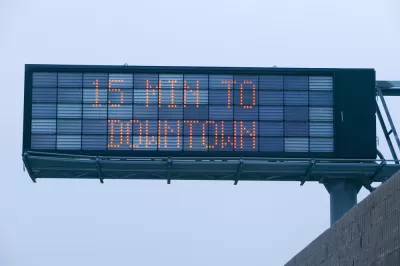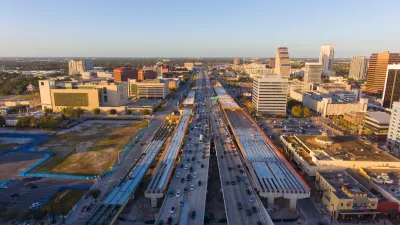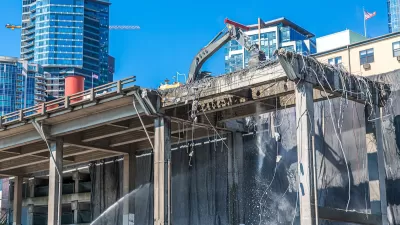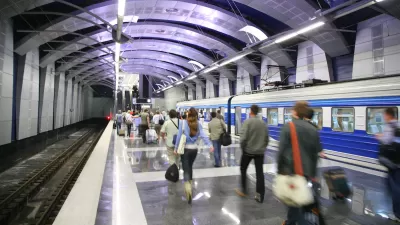The commercialization of highway rights of way is largely prohibited by federal regulations, but states are looking for new ways to generate revenue from billboards and rest stops.

California has 900 digital signs along highways around the state, usually reserved for safety messages, Amber Alerts, or drive times. Now the state is considering selling advertising on 25 of the signs, according to an article by Daniel Vock.
"Not everyone is on board with the idea. In fact, the California Association of Counties, the League of California Cities, half a dozen individual municipalities and several outdoor advertising agencies oppose [pdf] the measure," reports Vock.
The push from the Brown Administration reflects a larger trend among state governments to make more of highway capacity, and its connected land and infrastructure assets, to sell advertising. Just a year ago, the Federal Highway Administration (FHWA) rejected a similar proposal in Texas a year ago, for instance. New York and Michigan have also wrestled with the idea of public entities generating revenue with billboards or signs along highways.
Signs aren't the only resource states are looking to monetize, either. Some commercial uses were grandfathered in before the 1956 law that created the Interstate Highway System prohibited new commercial activity along highways. "So certain roads in Delaware, Maryland, Kansas, Oklahoma, Connecticut, Florida, Maine, Ohio, Pennsylvania, West Virginia, New Jersey, Massachusetts, Illinois, Indiana and New York have gas stations, restaurants and shops within their rights-of-way," explains Vock. Arizona, not on that list, recently asked the federal government for a waiver.
FULL STORY: Along Stretches of Highway, States Eye New Ad Opportunities

Planetizen Federal Action Tracker
A weekly monitor of how Trump’s orders and actions are impacting planners and planning in America.

Congressman Proposes Bill to Rename DC Metro “Trump Train”
The Make Autorail Great Again Act would withhold federal funding to the system until the Washington Metropolitan Area Transit Authority (WMATA), rebrands as the Washington Metropolitan Authority for Greater Access (WMAGA).

DARTSpace Platform Streamlines Dallas TOD Application Process
The Dallas transit agency hopes a shorter permitting timeline will boost transit-oriented development around rail stations.

Renters Now Outnumber Homeowners in Over 200 US Suburbs
High housing costs in city centers and the new-found flexibility offered by remote work are pushing more renters to suburban areas.

The Tiny, Adorable $7,000 Car Turning Japan Onto EVs
The single seat Mibot charges from a regular plug as quickly as an iPad, and is about half the price of an average EV.

Supreme Court Ruling in Pipeline Case Guts Federal Environmental Law
The decision limits the scope of a federal law that mandates extensive environmental impact reviews of energy, infrastructure, and transportation projects.
Urban Design for Planners 1: Software Tools
This six-course series explores essential urban design concepts using open source software and equips planners with the tools they need to participate fully in the urban design process.
Planning for Universal Design
Learn the tools for implementing Universal Design in planning regulations.
Municipality of Princeton
Roanoke Valley-Alleghany Regional Commission
City of Mt Shasta
City of Camden Redevelopment Agency
City of Astoria
Transportation Research & Education Center (TREC) at Portland State University
US High Speed Rail Association
City of Camden Redevelopment Agency
Municipality of Princeton (NJ)





























